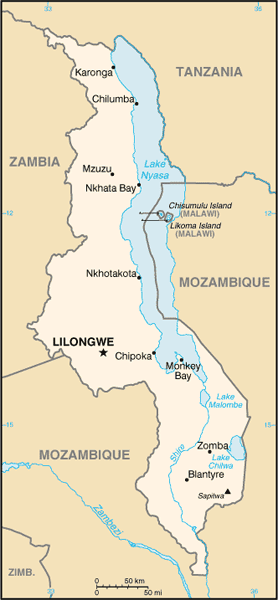Home » What We Do » Agriculture and Food Security » Food Assistance » Country Fact Sheets » Food Assistance Fact Sheet - Malawi
- What We Do
- Agriculture and Food Security
- Democracy, Human Rights and Governance
- Economic Growth and Trade
- Education
- Ending Extreme Poverty
- Environment and Global Climate Change
- Gender Equality and Women's Empowerment
- Global Health
- Water and Sanitation
- Working in Crises and Conflict
- U.S. Global Development Lab
May 8, 2017
Food Security Situation
- Malawi, which ranks 170 out of 187 countries in the 2016 UN Development Program Human Development Index, is a low-income country with 41 percent of the population living in poverty.
- The 2016 Malawi Vulnerability Assessment Committee found that, as of August 2016, the number of food insecure people in Malawi increased from 2.8 million during the 2015-16 lean season to 6.7 million people, as a consequence of the El Niño-induced drought. According to the Famine Early Warning System (FEWS NET), the number of food insecure people has since been drastically reduced due to timely humanitarian assistance as well as lower food prices and improved cereal availability. However, the intensity and frequency of shocks hitting Malawi make it difficult for households to recover and adapt, driving cycles of food and nutrition insecurity.
- A large portion of Malawi experienced Crisis (IPC Phase 3)* levels of food insecurity from August to December 2016, and food insecurity continued to deteriorate through the lean season into March 2017. During this time, food consumption gaps widened and households continued to engage in irreversible coping strategies, such as selling assets, stealing food, and taking children out of school.

CIA World Factbook
Food Assistance Projects
- The humanitarian assistance to 6.7 million people across the country ended in March/April 2017. USAID’s Office of Food for Peace’s (FFP) food assistance was instrumental in successfully reaching a large portion of the vulnerable populations in need of food.
- In response to the impacts of consecutive poor harvests related to El Niño, FFP assisted vulnerable populations in 24 of the 28 districts in Malawi with emergency food assistance through the UN World Food Program (WFP). In addition, FFP has also supported WFP with transportation and distribution costs for the Government of Malawi-released maize.
- FFP partners Catholic Relief Services (CRS) and Project Concern International (PCI) also responded to emergency food needs in the drought-affected areas by expanding their development programs to provide emergency food assistance.
- Through the CRS-led consortium, the FFP development food assistance project assisted 248,000 food insecure households in Malawi. The project, funded by FFP and Community Development Funds (CDF), aims to reduce chronic malnutrition and food insecurity and build resilience among vulnerable populations in Chikwawa, Nsanje, and rural Blantyre -- three of the most food-insecure, chronically malnourished, and disaster-prone districts of southern Malawi.
- The PCI-led consortium is implementing a project, funded by FFP and CDF, to improve food security among 63,400 vulnerable households in Balaka and Machinga districts. The project focuses on increasing market-oriented agriculture production, improving the health and nutrition of children and pregnant and lactating women, and improving the resilience of vulnerable households.
Food for Peace Contributions
Total Contributions:
| U.S. Dollars | Metric Tons | |
|---|---|---|
| Fiscal Year 2017 | $33.8 million | 4,010 MT |
| Fiscal Year 2016 | $116.0 million | 56,680 MT |
| Fiscal Year 2015 | $30.8 million | 17,155 MT |
| Fiscal Year 2014 | $8.9 million | 880 MT |
Fiscal Year 2017 Contribution Breakdown:
| U.S. Dollars | Metric Tons | |
|---|---|---|
| Title II Development | $1.7 million | 1,540 MT |
| Community Development Funds (CDF) | $11.5 million | ---- |
| Title II Emergency | ---- | ---- |
| Emergency Food Security Program (EFSP) | $20.6 million | 2,470 MT |
Note: EFSP: Emergency Food Security Program
*The Integrated Food Security Phase Classification (IPC) is a standardized tool that aims to classify the severity and magnitude of food insecurity. The IPC scale, which is comparable across countries, ranges from Minimal—IPC I—to Famine—IPC 5.







Comment
Make a general inquiry or suggest an improvement.